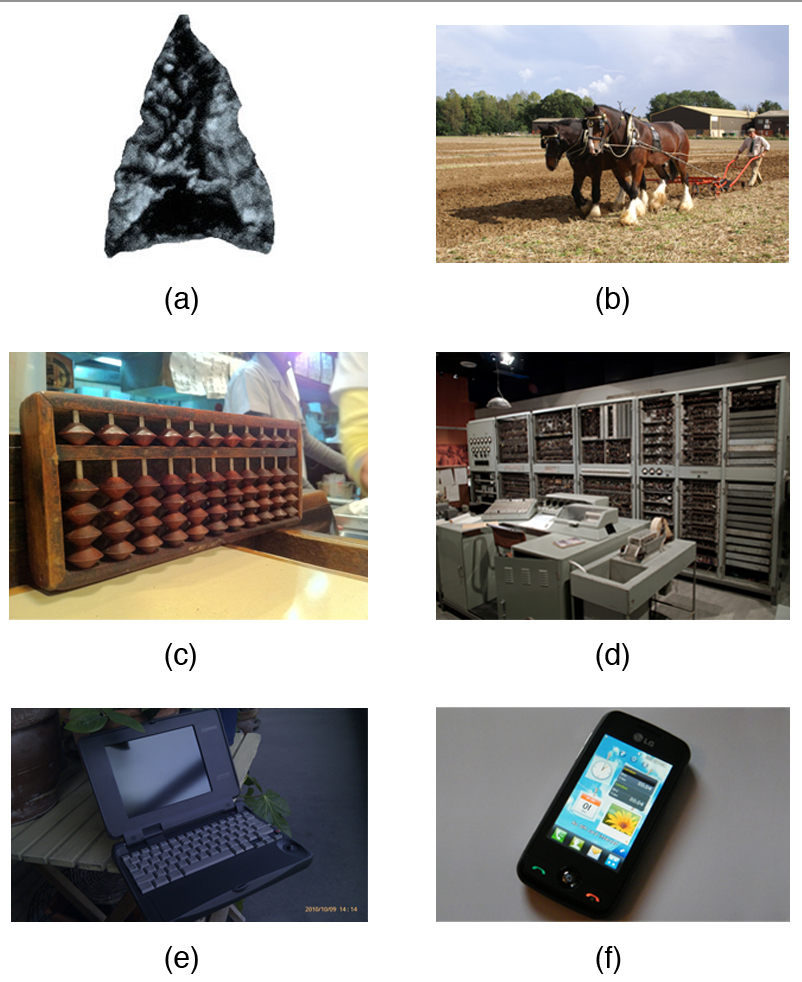| << Chapter < Page | Chapter >> Page > |

It is easy to look at the latest sleek tiny Apple product and think that technology is only recently a part of our world. But from the steam engine to the most cutting-edge robotic surgery tools, technology describes the application of science to address the problems of daily life. We might look back at the enormous and clunky computers of the 1970s that had about as much storage as an iPod Shuffle and roll our eyes in disbelief. But chances are 30 years from now our skinny laptops and MP3 players will look just as archaic.
While most people probably picture computers and cell phones when the subject of technology comes up, technology is not merely a product of the modern era. For example, fire and stone tools were important forms that technology developed during the Stone Age. Just as the availability of digital technology shapes how we live today, the creation of stone tools changed how premodern humans lived and how well they ate. From the first calculator, invented in 2400 B.C.E. Babylon in the form of an abacus, to the predecessor of the modern computer, created in 1882 by Charles Babbage, all of our technological innovations are advancements on previous iterations. And indeed, all aspects of our lives today are influenced by technology. In agriculture, the introduction of machines that can till, thresh, plant, and harvest greatly reduced the need for manual labor, which in turn meant there were fewer rural jobs, which led to the urbanization of society, as well as lowered birthrates because there was less need for large families to work the farms. In the criminal justice system, the ability to ascertain innocence through DNA testing has saved the lives of people on death row. The examples are endless: Technology plays a role in absolutely every aspect of our lives.

As with any improvement to human society, not everyone has equal access. Technology, in particular, often creates changes that lead to ever greater inequalities. In short, the gap gets wider faster. This technological stratification has led to a new focus on ensuring better access for all.

Notification Switch
Would you like to follow the 'Introduction to sociology' conversation and receive update notifications?